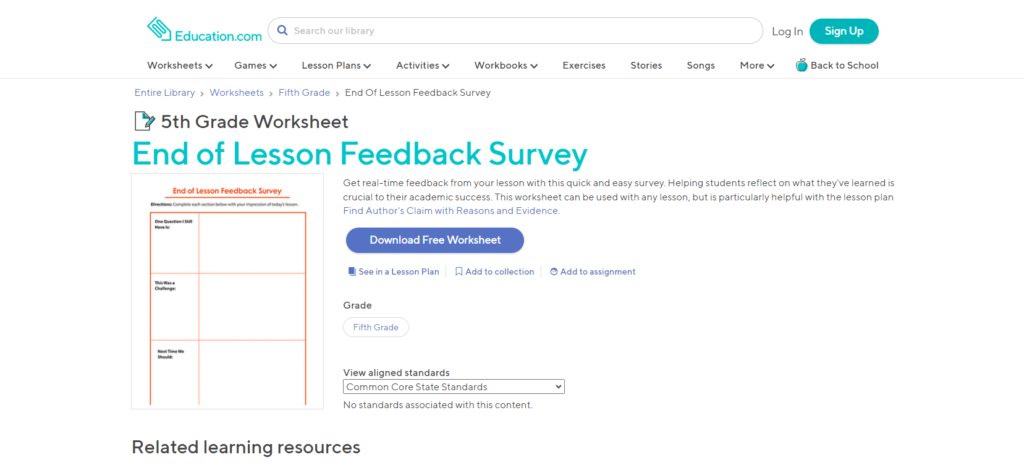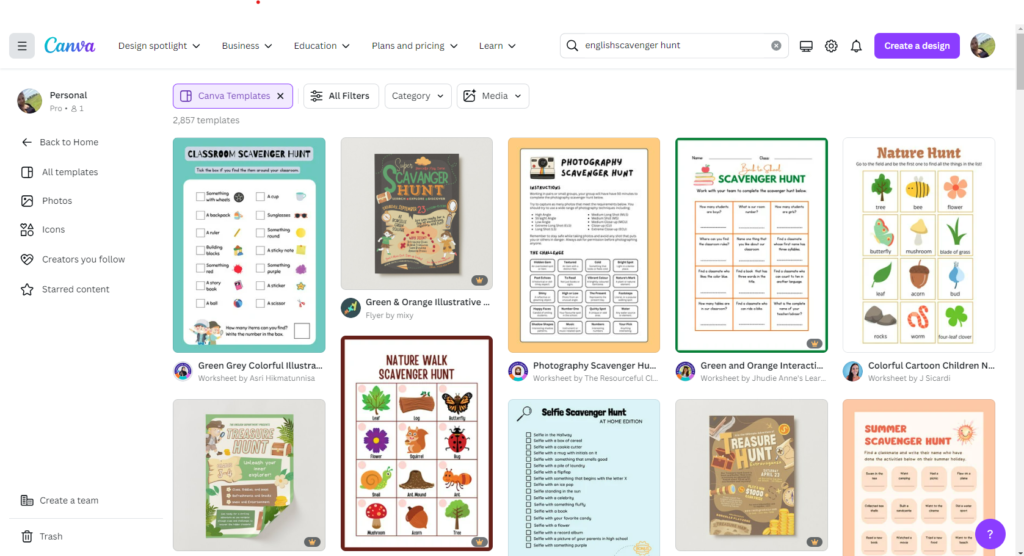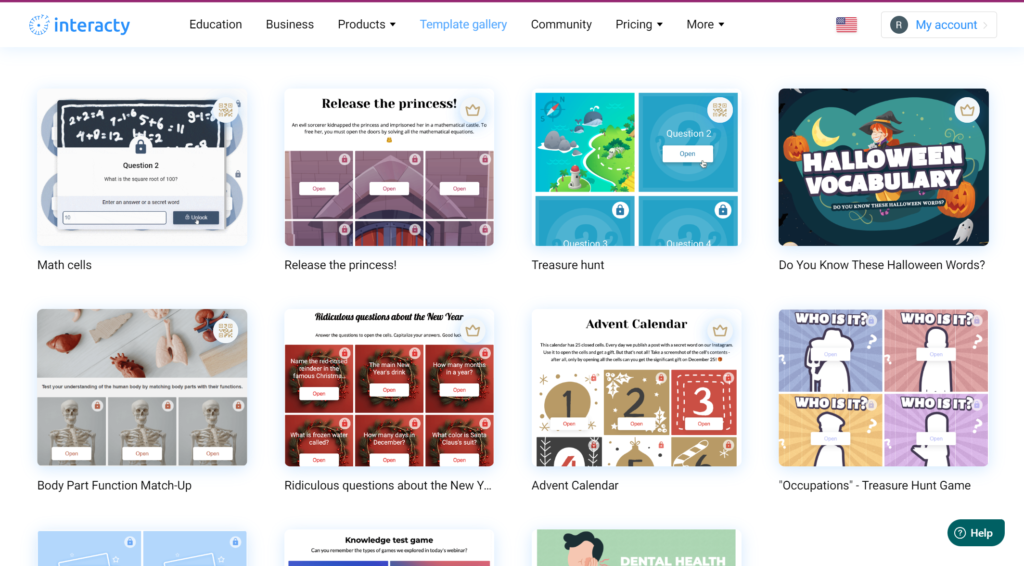5 Fun Teaching Activities to Make Learning More Engaging

In this article, we’ll explore five fun teaching activities that can make learning more engaging and memorable for students of all ages. If you’re looking to boost participation, encourage collaboration, or simply add a little more fun to your classroom, these activities will make a difference!
Imagine a classroom or homeschool lessons where your child or students are excited to learn, actively participate in lessons, and leave each day with a smile. Sounds like a dream, right?
Well, it’s entirely possible!
Engaging your child or students with fun teaching activities can transform the way they experience learning.
In this article, we’ll explore :👌🏼The benefits of game-based learning
👌🏼How to choose the right games for your class
👌🏼 Examples of Educational Games
👌🏼How to effectively incorporate games into your teaching strategies, and
👌🏼Practical examples you can try in your own classroom.
So in saying that, let’s dive right in!
Hey there! Just a quick heads-up: Some of the links on this site are affiliate links. This means that if you click on a link and make a purchase, I might earn a small commission at no extra cost to you. It’s one of the ways I keep the lights on and continue to bring you valuable content. I only recommend products and services that I genuinely believe in and think will be useful to you. If you have any questions about the products or how this works, feel free to reach out by clicking here. Thanks for supporting the site!
Lets jump in and look at 5 fun activities that can make learning more engaging.
🏅Fun Teaching Activities #1🏅
Active Learning with Group Challenges
Group challenges are a fantastic way to bring energy and excitement into the classroom or with a homseschool learning group if you are joined to one. These fun teaching activities encourage students to work together and more importantly make learning a more dynamic and interactive experience.
Scavenger hunt
One of my favorite group challenges is a scavenger hunt tailored to the lesson at hand. Imagine sending students on a hunt around the classroom (or even the school) to find clues related to a math problem or a history lesson. Not only does this get them moving, but it also helps them to think critically about the subject matter.
Trivia Games
Another great idea is organizing trivia games where students are divided into teams and must answer questions related to the day’s lesson. The competitive element adds a layer of excitement, and you can even include small prizes for the winning team to further motivate participation.
When organizing group challenges, it’s essential to keep the activities well-structured and the goals clear.
I’ve found that setting specific rules and time limits can help keep students focused and ensure that the challenge remains a learning experience rather than just a fun distraction. Group challenges promote collaboration, critical thinking, and active participation, making them a great tool to engage students in any subject.
Here are some free online tools that can help you create your own fun teaching activities:
ABCYa has some great games which include trivia games.
You can check out the range by clicking on the ABCYa logo to the left or here.
This is a site where you can create your own anchor chart for group work rules online:

🏅Fun Teaching Activities #2🏅
Interactive Storytelling Sessions
While group challenges are fantastic for promoting teamwork, another powerful method to captivate your students is through interactive storytelling.
💭
Storytelling is one of the oldest and most powerful teaching tools. When students are actively involved in the storytelling process, learning becomes an adventure.
💭
📚 Storytime 📚
I once had my class create an alternate ending to a classic fairy tale; as a result, they explored new possibilities and perspectives. Furthermore, they had to work together to decide how the characters’ fates would change, and consequently, this led to some incredibly creative and unexpected outcomes!
Reflecting on my time teaching first graders in an English immersion program in China, one of the most memorable activities was creating an alternate ending to The Three Little Pigs. In contrast to other classes with short sessions, these students had me full-time, so I decided to challenge them with this creative task.
Despite their limited English, the students eagerly collaborated in small groups to rewrite the fairy tale’s ending. For example, some groups gave the villain a second chance, while others introduced new characters or plot twists. Notably, one group humorously decided that the Big Bad Wolf just wanted to invite the Three Little Pigs to his birthday party!
By using simple props like hats and masks, the students brought their stories to life. In addition, the activity not only boosted their creativity but also gave them confidence in using English. Indeed, even the shyest student became a star, narrating her group’s story with excitement and flair.
Ultimately, this experience reminded me of how powerful interactive storytelling can be, especially in a language learning environment. By involving the students directly in the creative process and giving them the freedom to shape the story, I was able to make the lesson not just educational but also incredibly fun and memorable. This approach is something I’ve carried with me throughout my teaching career, always looking for ways to turn lessons into engaging, hands-on experiences.
These activities not only boost creativity but also improve students’ communication skills and their ability to work in a group. Plus, they make lessons more memorable.
After all, who wouldn’t remember the time they acted out a thrilling courtroom drama in history class or created a spooky ghost story in English?
You can get some cheap props from sites like Amazon.
Explore the items below (click link) to get some ideas of what you could use as props:
🏅Fun Teaching Activities #3🏅
Gamification: Turning Lessons into Games
Storytelling isn’t the only way to make lessons more engaging. Another way is through gamification, an approach that turns learning into a game. Let’s see how adding game-like elements can make even the most mundane lessons fun and motivating.
💭Gamification is the process of adding game-like elements to non-game activities in the classroom.
How Gamification Transforms Education
Gamification can turn even the most mundane lessons into something students eagerly anticipate. By introducing game elements into the classroom, learning becomes interactive and enjoyable, significantly boosting student motivation and engagement.
When to Introduce Gamification
One example of when to apply gamification is during homework assignments. I once introduced a point system for homework completion, and it was a game-changer. Students began competing in a friendly manner to earn points, leading to a significant increase in homework completion rates.
What Types of Gamification Work Best
Quiz-Based Reviews:
Create quizzes where students earn points or badges for correct answers. This not only reinforces learning but also adds a competitive edge that students enjoy.
Board Game Lessons
Turn your lesson into a board game, where each correct answer allows students to move forward on the board. This adds a physical and visual element to learning, making it more engaging.
Classroom Economies:
Some teachers create entire classroom economies, where students earn “classroom currency” for completing tasks. They can later spend this currency on rewards like extra recess time or a homework pass. This system teaches responsibility and financial literacy while making learning fun.
Here is an example for some of a classroom economy, click on the cover image to find out the details:
💡
Classroom Behaviour Management Bingo for Whole Class
I’ve used it successfully with challenging groups, including a particularly tough 2nd-grade class, to achieve social, emotional, and behavioral goals.
The resource is versatile, printable in black and white or color, and suitable for classroom or home use. Simply print, laminate, and start fostering a positive learning environment.
Why Gamification Works
- makes learning more interactive and fun, which significantly boosts student engagement and motivation.
- caters to different learning styles, ensuring that every student can benefit from the activity.
🏅Fun Teaching Activities #4🏅
Hands-On Experiments and Projects
There’s no better way for students to connect theory with practice than through hands-on experiments and projects. I’ve seen how much more engaged students become when they can see and touch the concepts they’re learning about. Whether it’s a science experiment, an art project, or a hands-on math problem, these activities help students understand abstract concepts by bringing them to life.
For example:
- you might have students build models of different geometric shapes to understand their properties better or create a simple circuit to learn about electricity.
- Art projects, like creating a class mural based on a historical event, can also be incredibly engaging.
I once had my students create dioramas to depict scenes from a novel we were reading, and the results were amazing. Not only did they enjoy the project, but their comprehension of the material deepened significantly!
When planning hands-on activities, it’s important to provide clear instructions and materials. In my experience, students are more likely to engage with the project when they feel confident about what they’re supposed to do.
These activities also promote creativity, problem-solving, and collaboration, making them an invaluable tool in any teacher’s arsenal.
🏅Fun Teaching Activities #5🏅
Music and Movement Activities
I’ve found that when students are allowed to move around and express themselves through music, they’re more focused and engaged.
Incorporating music and movement into your lessons can be a game-changer, especially for younger students.
For instance:
- using educational songs to teach math concepts or vocabulary words can help students remember the material better.
- movement-based learning games, like dancing to a song about the water cycle or playing “Simon Says” with directions in a foreign language, can make lessons more dynamic.
- rhythm and clapping games to reinforce concepts like counting or syllables – clap out the rhythm of different words to help students understand syllable division
These activities also help to break up the monotony of sitting still for long periods, making them a great tool to keep students energized and focused throughout the day.
Recommendation
💡
Education.com has been a lifesaver for teaching resources. I have accessed many worksheets and games through this site.
Check it out for yourself.
Wrap up
Making learning fun and engaging doesn’t have to be a daunting task.
With a little creativity, you can transform your classroom into a place where students are eager to learn and participate. Whether it’s through:
- group challenges
- interactive storytelling
- gamification
- hands-on projects, or
- music and movement activities,
There are endless ways to bring excitement into your lessons. You’ll be amazed at the difference they can make in engagement and overall learning experience.
And who knows? You might even find yourself having more fun too!
Ready to transform your classroom? Try these activities and watch your students’ engagement soar! Feel free to share your own fun teaching activities in the comments below. Let’s keep the ideas flowing!
❓🙋
Frequently Asked Questions
1. How can I adapt these activities for different age groups?
Adapting activities for various age groups involves simplifying or complicating the content based on the students’ developmental levels.
- For younger students keep instructions clear and use more visuals and hands-on elements.
- For older students, you can introduce more complex challenges and encourage deeper critical thinking. Adjust the difficulty of games, projects, and discussions to match their skill levels and interests.
2. How do I ensure that all students are equally engaged in group activities?
To ensure all students are engaged, assign specific roles within the group to give everyone a responsibility, and rotate these roles regularly.
- Establish clear guidelines for participation
- encourage open communication among group members
- Monitoring and guiding the groups can help manage dynamics and ensure that quieter students have opportunities to contribute.
3. What if I have limited resources for hands-on experiments and projects?
Limited resources shouldn’t hold you back. Many hands-on activities can be done with everyday items you already have.
For e.g
Use recycled materials for art projects
- Cardboard Tubes: Use them for creating sculptures or building models. You can paint or wrap them for a more polished look.
- Egg Cartons: Great for making textures or sorting small items. Cut and paint to make colorful creatures or flower petals.
- Plastic Bottles: These can be turned into plant pots, decorative pieces, or even components for a homemade bird feeder.
- Encourage students to bring in their own recyclable materials from home. Plus, this approach promotes environmental awareness and responsibility.
Household items for simple science experiments.
- Baking Soda and Vinegar: Combine these to create fizzy reactions. This classic experiment is perfect for demonstrating chemical reactions and gas production.
- Food Coloring and Milk: Use food coloring, milk, cotton swabs, and dish soap to create a swirling effect. This experiment showcases the interaction between milk fat and soap.
- Paper Towel and Water: Create capillary action demonstrations by placing a paper towel in a cup of water and observing how the water moves up the towel.
Online resources or community donations to supplement your classroom supplies.
- If you find yourself in need of additional supplies, the internet and community resources can be valuable assets:
- Online Resources: Websites like Teachers Pay Teachers, educational YouTube channels, and free printable resources can provide ideas and materials for various projects and activities.
- Community Donations: Reach out to local businesses, community centers, or even parents to request donations of supplies or materials. Many organizations are willing to support educational initiatives and may have surplus items they can contribute.
- Creating a wish list of supplies and sharing it with your school community can sometimes yield surprising and generous contributions.
- By leveraging these strategies, you can make the most of limited resources and ensure that your hands-on experiments and projects remain engaging and educational for your students.
4. How can I incorporate technology into these fun teaching activities?
Incorporating technology into your teaching activities can add a dynamic and modern twist to traditional methods, making learning more engaging and interactive. To effectively integrate technology into your classroom activities, consider the following strategies:
Educational apps and online games offer a wealth of opportunities to make learning fun and interactive.
Educational Apps and Online Games
Math and Language Apps/Websites:
📢 ABCya can turn practice into a game, with interactive challenges and rewards that motivate students to learn.
📢 IXL offers a delightful experience, full of vibrant visuals, interactive questions and exciting prizes. Learning transforms into an adventure where students build the confidence to explore new concepts and rise to any challenge
Interactive Quizzes:
📢 Fillout is a great tool. It allows you to create custom quizzes that students can participate in using their devices. These platforms can make review sessions more engaging and competitive.
Multimedia Elements
Using multimedia can enhance storytelling and other activities:
- Digital Storytelling Tools:
- Platforms like BedtimeStory let students create their own digital stories with AI. This can be a great way for students to engage with a story’s plot and characters on a deeper level.
- Video Clips:
- Incorporate short educational videos or movie clips relevant to the lesson. This visual aid can help illustrate concepts and maintain student interest.
- Youtube has a whole host of educational videos and movie clips:
Observe student participation and how they engage during activities.
Gather feedback from students about their experience.
5. How do I assess the effectiveness of these activities in improving student learning?
Observe Student Participation and Engagement
- Classroom Observation:
- Firstly, pay close attention to how students interact during activities. Are they actively participating? Are they excited and engaged? Observations can provide immediate feedback on whether the activity is capturing their interest. Additionally, look for signs of collaboration and communication, which can indicate a deeper level of engagement.
- Engagement Metrics:
- Moreover, use tools or methods to measure engagement: track the time students spend on digital platforms or note the level of enthusiasm in group discussions.
- Metrics like these offer a quantitative view of student involvement, helping to identify what works best in your classroom.
Gather Feedback from Students
Surveys and Questionnaires
After completing an activity, consider asking students for their opinions. Simple surveys or feedback forms can help you understand their perspectives on what they enjoyed and what could be improved. For instance, you could use a feedback survey form from a resource like Education.com, which provides worksheets tailored to classroom needs.
Reflective Discussions
Furthermore, hold a class discussion where students can share their experiences and thoughts about the activity. This approach can provide qualitative insights into their learning experience, allowing you to gauge their emotional and intellectual responses more deeply.
By integrating these methods, you can gain a comprehensive understanding of how well your activities support student learning and make informed decisions on how to enhance them. This continuous feedback loop ensures that your teaching strategies remain dynamic and effective.
Here is an example of a feedback survey form:









